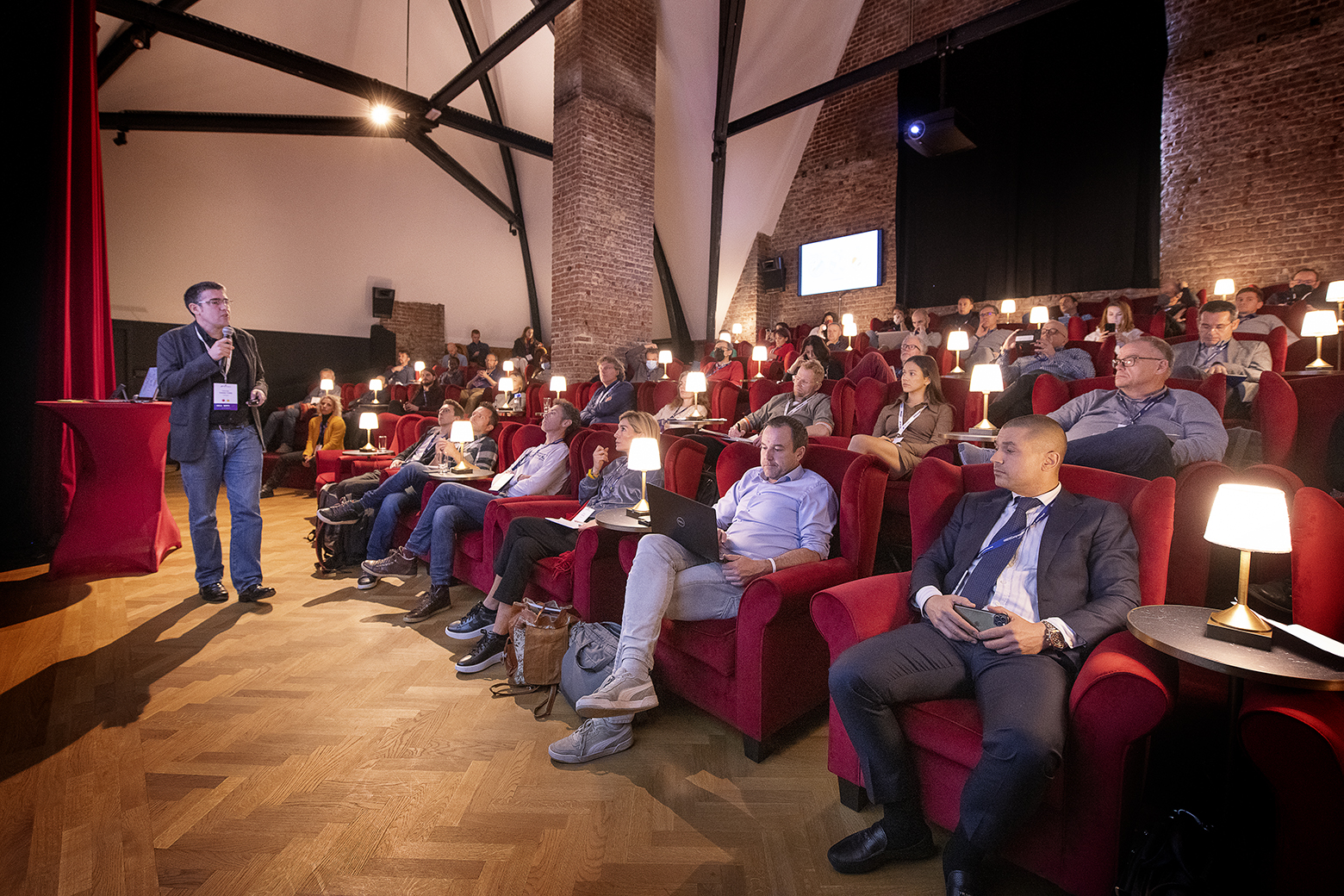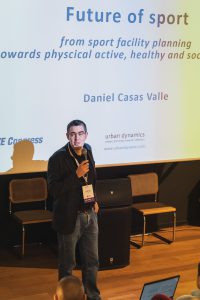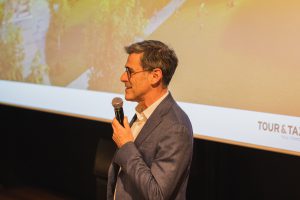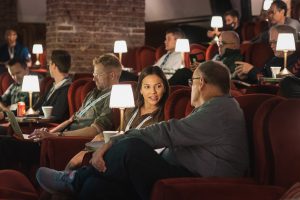
Placemaking for physical activity workshop: “It’s not about the buildings, it’s about life between the buildings”
How can we Restart life in our cities in a new way? Expert speakers from Placemaking Europe and Urban Dynamics, and Bennelux placemakers Rozina Spinnoy, Belgium Design Council, Miel Vanhaverbeke, IPitup, and Bart Cardinaal, Hunk Design Rotterdam together with Tour & Taxis COO Peter De Durpel gathered in the MOVE Congress workshop “Rebuild, Reconnect and Restart with Placemaking for the physical activity network” on 18 November to take part in three sessions, providing inspiring yet practical concepts of re-imagining public spaces so they become more inviting for people to be physically active.
The workshop, hosted and coordinated by Laska Nenova, ISCA Head of Campaigns and Membership and Placemaking Europe Board Member, kicked off with a presentation from Daniel Casas Valle, Senior Urbanist from Urban Dynamics, Portugal, where he explored together with the audience sport environments of the future.
“If you look at existing neighbourhoods, you have all opportunities to connect daily activities like walking, biking and skating with specific points where you are going to do sports.”
 Daniel then demonstrated that there are many possible scenarios how you can use the existing city to ensure that people engage into physical activity. It is important to look at the bigger picture and take into consideration the possibility for a multi-use of the same urban area for different activities (e.g. physical activity and social interaction), for different seasons (e.g. ice-skating and football) and even for unconventional functions (e.g. using buildings as sport tools).
Daniel then demonstrated that there are many possible scenarios how you can use the existing city to ensure that people engage into physical activity. It is important to look at the bigger picture and take into consideration the possibility for a multi-use of the same urban area for different activities (e.g. physical activity and social interaction), for different seasons (e.g. ice-skating and football) and even for unconventional functions (e.g. using buildings as sport tools).
Daniel’s presentation then continued with presenting examples of the three pillars of urban design and planning for the physical activity, which are social interaction, sustainability and digitalisation. A neighbourhood of the future would be a place where people of all ages could practice different activities and share spaces while interacting with each other, with the smart use of areas and resources as well as digital techniques, he said.
Anna Louise Bradley continued the first session of the workshop with a presentation of the Placemaking for Active Recreation Kit (P.A.R.K.), digging into the concept of placemaking and explaining how we can bring placemaking and grassroots sports together and what grassroots sport experts can use as guidelines and tools.
“The overall feedback of placemaking is bringing sense of belonging and health,” she said. Being active in public places, according to Anna, is not only about finding different ways to exercise or move. Through placemaking, high quality public spaces can connect community around a certain place. Anna then gave a few examples of how we can bring placemaking and grassroots sports together by showcasing placemaking solutions in the Netherlands and Spain and introduced the P.A.R.K. research findings collected so far.
The first session concluded with Miel Vanhaverbeke, IPitup, Belgium, who presented the case study of the Active Bench – a unique all-in-one tool to develop movement-friendly urban spaces, which started as an idea just two years ago.
As Miel put it in his presentation, “sitting is the new smoking”, thus a creative solution was required to combat the 21st century “disease” of inactivity that is now quite renowned – and the MOVE Congress participants could test the bench themselves in the venue’s activity zone.
 The workshop continued with Inspiration Session from Peter De Durpel, COO of Extensa and Tour & Taxis, which was the MOVE Congress venue this year. The participants learned about the concept and the idea behind the creation of Tour & Taxis as a mixed-use, sustainable, and state-of-the-art development, and how the complex creates opportunities for people to be physically active. In dealing with the historical venue like this one it is important, Peter said, not to diminish these buildings, but to bring more meaning to them; leaving space for physical activation is an example of that concept in practice.
The workshop continued with Inspiration Session from Peter De Durpel, COO of Extensa and Tour & Taxis, which was the MOVE Congress venue this year. The participants learned about the concept and the idea behind the creation of Tour & Taxis as a mixed-use, sustainable, and state-of-the-art development, and how the complex creates opportunities for people to be physically active. In dealing with the historical venue like this one it is important, Peter said, not to diminish these buildings, but to bring more meaning to them; leaving space for physical activation is an example of that concept in practice.
Bart Cardinaal from HUNC Design Rotterdam, Netherlands introduced the audience to the “Flying Grass Carpet” – a highly creative and innovative solution for bringing people together in a public realm. Bart demonstrated how the concept has worked in different cities and what were the effects of its use on the duration and amount of visits to those public spaces.
Philippe De Witte then introduced Active Local Europe, a project aiming to create opportunities for cities and municipalities in the EU to give their citizens a feeling of belonging in an open society. In his presentation he explored the relationship between citizens, municipalities and the EU level when it comes to sport and physical activity and why investment into sport is crucial for development both at the cities’ and at the EU level.
 The session was attended by different professionals from the areas of community engagement, placemaking and, of course, grassroots sports, who had the opportunity to engage into the debate session at the end of the workshop. As the first session’s moderator Anna Bradley mentioned in her presentation, placemaking process if a process where it is extremely important to get to know the community, it is a “co-creative local participatory process”. We hope that the participants of our workshop managed to find new contacts to further develop placemaking for physical activity in their communities and to get inspired to look creatively at the public spaces around for better understanding how people can use them to be physically active.
The session was attended by different professionals from the areas of community engagement, placemaking and, of course, grassroots sports, who had the opportunity to engage into the debate session at the end of the workshop. As the first session’s moderator Anna Bradley mentioned in her presentation, placemaking process if a process where it is extremely important to get to know the community, it is a “co-creative local participatory process”. We hope that the participants of our workshop managed to find new contacts to further develop placemaking for physical activity in their communities and to get inspired to look creatively at the public spaces around for better understanding how people can use them to be physically active.
By Maria Malyshkina, ISCA
Photos: Marie Oleinik and Simon Pugh




